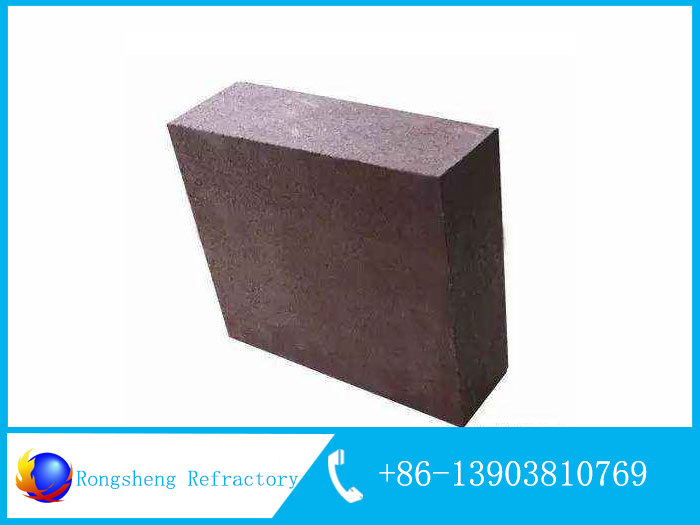The main difference between the production processes of directly bonded magnesia-chrome bricks and ordinary magnesia-chrome bricks lies in the former’s use of raw materials with lower impurity content and higher firing temperatures. The raw materials used to produce directly bonded magnesia-chrome bricks typically have an MgO content greater than 95% and a Rongsheng refractory material content greater than 97%. The particle bulk density is around 3.25 g/cm3, and the SiO2 content in the gangue is generally limited to below 3%. When using chrome concentrate, the SiO2 content can be lower than 1.0%. Depending on specific needs and applications, one to two types of magnesia and one to two types of chromite may be selected for the mixture. For cement kiln applications of directly bonded magnesia-chrome bricks, magnesia is generally used as the fine powder and partial granular material, while chromite is used as the granular material, with a Cr2-3 content ranging from 3% to 14%. Directly bonded magnesia-chrome bricks used for lining metallurgical furnaces sometimes require a higher Cr2O2 content, such as 20%. However, when using relatively pure magnesia and chromite co-ground as the matrix, there is often a risk of expansion and cracking during the firing process, resulting in defective products. Therefore, the anchor ore content in the matrix fine powder should be controlled within the permissible range for firing. The firing temperature of directly bonded magnesia-chrome bricks from Rongsheng refractory materials varies depending on the purity of the raw materials and the degree of sintering. The higher the degree of sintering of magnesia, the lower the impurity content in the mixture, making it more likely to achieve a successful firing of Rongsheng refractory materials.
Directly bonded chrome magnesite bricks are typically fired at temperatures above 1700℃. Due to the 95% MgO content of magnesia, bricks produced from such magnesia are also referred to as medium-grade magnesia-chrome bricks. The chemical composition of directly bonded magnesia-chrome bricks contains fewer impurities, resulting in a high direct bonding rate between refractory material grains, thereby exhibiting excellent slag resistance and high-temperature performance. Directly bonded magnesia-chrome bricks also possess excellent resistance to thermal shock, withstanding water quenching at 1100℃ for 4 to 10 cycles.

